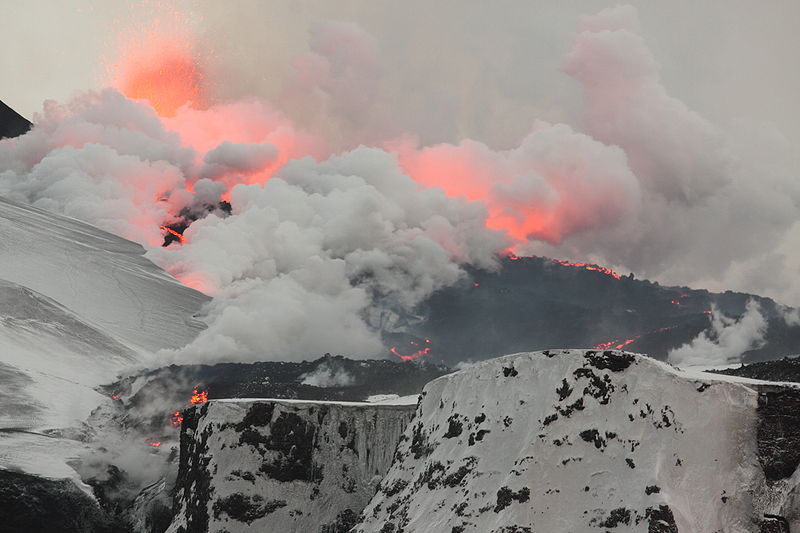It’s raining ash! Hallejulah!
This post contributed by Madeline McCurry-Schmidt, Frontiers in Ecology and the Environment intern at the Ecological Society of America.
While stranded tourists and airline companies curse Iceland’s belching volcano, atmospheric scientists have found a ray of hope in the clouds of ash. In a press conference today, experts from the National Oceanic and Atmospheric Administration (NOAA) said migrating ash plumes are giving scientists a chance to test new atmospheric science models and ash-sampling technology.
Stan Benjamin, director of the Forecast Branch for NOAA’s Global Systems Division, described how the eruption has allowed NOAA to test a modeling system called the FIM Global Model (FIM). FIM is mainly used for hurricane predictions, but Benjamin believes combining FIM with satellite imaging will lead to better volcano-plume monitoring in the future—information the airlines would sure appreciate. Another useful model is the Hybrid Single Particle Lagrangian Integrated Trajectory Model (HYSPLIT), which predicts patterns based on ash particle size, ash column height and rate of emission from the volcano.
While these models appear perfectly efficient on paper, scientists are faced with a logistical puzzle: How the heck do data collectors get close enough to take samples from a volcano?
“We don’t really have as good a handle as we should on ash particle size,” said Gary Hufford, a physical scientist with NOAA’s National Weather Service. Other experts at the NOAA briefing shared the regret that, for safety reasons, no one can fly into a plume to take samples. If we could, said Hufford, we would know the concentration and chemistry of the ash as it dissipates. The solution to this problem has a science fiction feel to it:
“We could send an unmanned aerial vehicle [UAV] into the ash cloud to collect data we could get no other way,” explained Gary Hufford. While there are not yet plans to send UAVs into the volcano’s spew, there are plenty of atmospheric scientists that have UAV technology ready. If the volcano keeps going and the scientists get funding, said Hufford, we may see a fleet of robo-planes taking samples: “This is certainly a unique opportunity to do a field test.”
These atmospheric scientists have been given a chance many researchers wish for during field seasons: The stars (or the tectonic plates) have aligned to allow them to test innovative models and advanced technology.
Madeline McCurry-Schmidt is a third-year English/Design major at University of California, Davis. She is currently interning at ESA’s Frontiers in Ecology and the Environment.

